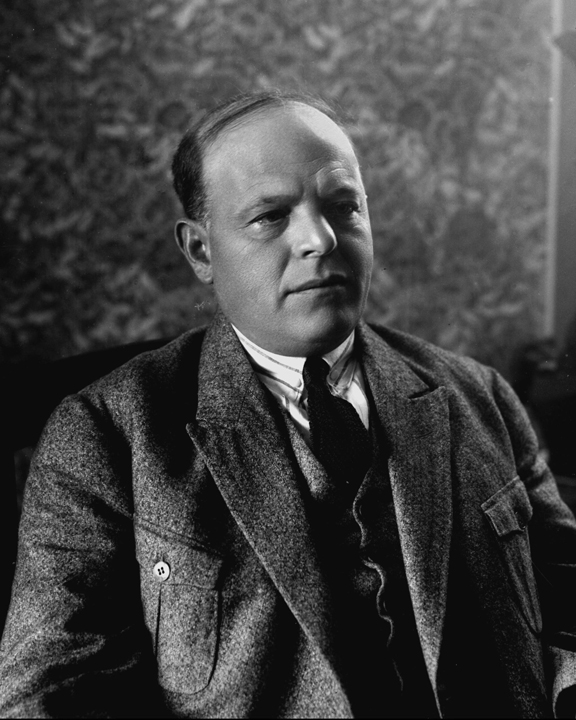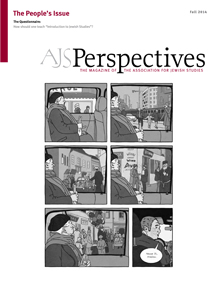
This much is clear: the biblical 'am ha-'areẓ bears no resemblance to the rabbinic. The phrase first appears following Sarah's death. After mourning his wife, Abraham asks the Hittites who (according to Genesis) inhabited the city of Hebron, for a burial place, and when they assent, "Abraham rose and bowed to the Hittites, the people of the land ('am ha-'areẓ)" (Gen. 23:7). Since Abraham is characterized as a stranger in this chapter ("I am a stranger and an alien among you . . ." v. 4), 'am ha-'areẓ appears to refer to the Hittites' status as, quite literally, the people of the land. In this passage the group in question is ethnically other, but it need not be.
In 2 Kings, the defeat of the Baal-worshipping queen Athaliah and the reestablishment of the Davidic line reaches its dramatic peak when Athaliah enters the Temple to find that her young usurper, Jehoash, has assumed the royal position by the Temple pillar with "all the people of the land rejoicing and blowing trumpets" (2 Kgs 11:13). Athaliah is summarily executed and immediately thereafter "all the people of the land went to the house of Baal and tore it down" (2 Kgs 11:18). In these passages, 'am ha-'areẓ is contrasted to the religious other—Athaliah and other Baal worshippers—and is akin to ha-'am (which appears alongside it), the popular, non-elite masses.
So too when God commissions Jeremiah, the prophet is promised divine aid to assure that he stands firmly "against the kings of Judah, its princes, its priests, and the people of the land ('am ha-'areẓ)" (Jer. 1:18). The 'am ha-'areẓ are clearly part of the Judean landscape, and Jeremiah distinguishes them from the royal and religious elites. Though further nuancing is possible (some scholars identify the group as rural), the general contours of 'am ha-'areẓ are clear: the nonelite collective inhabiting a defined region, whether Israelite/Judean or not.
But things become more complicated during the Second Temple period. Prophesying in the early days of the restoration, Haggai sees the return to Zion as a unifying moment: "Yet now take courage, O Zerubavel, says the lord; take courage . . . high priest; take courage, all you people of the land . . . for I am with you, says the lord of hosts, according to the promise that I made you when you came out of Egypt" (Hag. 2:4-5). The imperial governor (and descendent of the Judean royal line), the priesthood, and 'am ha-'areẓ are united in their present task, and in their shared origin of the Egyptian exodus—'am ha-'areẓ is evidently the people of Israel in the Persian province of Yehud. But not everyone viewed unity with favor, for the local populace is barred from assisting in the restoration of the Temple despite their protestation to the returning exiles that "we worship your God as you do" (Ezra 4:3). This rejection is justified as a response to the locals' custom of intermarrying with other religious and ethnic communities: "The people of Israel . . . have taken some of their daughters as wives for themselves and for their sons. Thus the holy seed has mixed itself with the peoples of the lands" (Ezra 9:1–2). In so doing, parts of Israel have become, themselves, 'am ha-'areẓ and so Ezra urges the returning exiles to "separate yourselves from the peoples of the land and from the foreign wives" (Ezra 10:11). With this shift, 'am ha-'areẓ for the first time comes to mark a group that is both internal and other.
The tannaitic 'am ha-'areẓ is also an internal otherness, though one defined in a more specific halakhic sense as a person who is not scrupulous in the observance of tithes and purities—the countertype of the haver: "One who accepts four principles is considered a haver: that he not give a gift offering (terumah) or tithes to 'am ha-'areẓ; that he not perform purities for 'am ha-'areẓ; and that he eat non-consecrated food in a state of ritual purity" (T. Demai 2:2). The difference between the 'am ha-'areẓ and the sage is significant but does not entail strict social ostracism, as sages are allowed to take the daughters of 'am ha-'areẓ in marriage, though they should not to give their young daughters to 'am ha-'areẓ lest they—still impressionable—adopt unscru pulous observance (T. Avodah Zarah 3:3).
The Babylonian Talmud, in contrast, offers a radically negative, and radically troubling, assessment of 'am ha-'areẓ: "One must not marry the daughter of 'amei ha-'areẓ since they are an abomination, and their wives are creeping creatures, and it is of their daughters that Scripture states, 'Cursed be anyone who lies with a beast' (Deut. 27:21)"; "Rabbi Elazar said: 'It is permissible to perforate an 'am ha-'areẓ on Yom Kippur that falls on the Sabbath.' His students said to him: 'Rabbi, say—to slaughter him.' He said: 'That requires a benediction, the other does not'"; "The hatred of an 'am ha-'areẓ toward a sage is greater than the hatred of a non-Jews to Israel—and their wives' is greater yet" (all these sayings are from B. Pesahim 49b). Given the Babylonian Talmud's centrality in the traditional rabbinic curriculum, it is no surprise that its view of 'am ha-'areẓ held sway for centuries (even if some of the more extreme sayings were qualified as exaggerations by later authorities).
But the vicissitudes of 'am ha-'arẓz did not end at their Talmudic nadir. With the collapse of traditional Jewish social hierarchies and the rise of various volkisch national ideologies, many modern Jews came to see freedom from Talmudic learning (and learning more broadly) as an advantage, not a stigma. And so began the rehabilitation of 'am ha-'areẓ. Thus Bialik, in his attempt to "rehabilitate" Halakhah as a poetic mode suited for vital national composition ("Halakhah Ve-'aggadah") writes:
When a man of Israel reads [the Mishnah tractate] Zera'im, for example, does it not happen that air of life ['avir shel hayyim] and the smell of earth and grass waft at him from within the words, so that he might suddenly forget that he is in the bet midrash and that he is studying, and see before him the people—'the people of the land'—as they labor in the field and the garden and the vineyard and the threshing floor . . .
In this subtly brilliant juxtaposition, Bialik reverses the hierarchy of rabbinic scholar and 'am ha-'areẓ, as the farmer's engagement of the physical world—the smell of the tilled field, his body's exertion as he brings sustenance from the earth—transports the scholar to a reality far removed from the house of study.
In this passage, the Mishnah becomes the unintended (that is: dialectical) instrument of subversion: neither its pithy prose nor its halakhic canonicity can suppress the sensuous vitality seething beneath its surface. It is 'am ha-'areẓ who breathes the "air of life," an implicit contrast to the atmosphere of death surrounding the yeshivah bokher. (The phrase 'avir shel hayyim may be a subtle reference to Bialik's own identification with the Mishnaic farmer, who is breathing the "air of life" and also the "air of Hayyim").
Bialik is not alone. Some of the revisionist moments are institutional. A Talmudic dictum states: " 'am ha-'areẓ die on account of two things: that they call the Torah ark 'the ark' and they call the synagogue bet ha-'am" (B. Shabbat 32a). The ubiquity of Reform synagogues named "Temple Beth Am" is, in a manner, an attempt to reclaim a dimension of the congregation actively suppressed in this saying—the communal, the 'am aspect of 'am ha-'areẓ. Others are literary: Shneur Zalman's poem "A Song of Praise to 'Amei Ha-'areẓ," or Yair Agmon's novel 'Am ha-'areẓ (2012) in which a recently released soldier hitchhikes through Israel because he wishes to meet the full human spectrum of its residents. Agmon writes: "I am dying to meet them already, the kibbutzniks from Ein Harod, the settlers from Kedumim, the fishermen from Tiberias, the Christians from Nazareth, the rich kids from Ramat Aviv and the moshavniks from Vitkin, the Ethiopians from Hadera and the career officers from Reut, the Palestinians from Ramallah and the Haredim from Bene Berak . . ." He is eager to meet the titular 'am ha-'areẓ—the rich human mosaic that makes up present-day Israel, Jewish and non-Jewish alike.
The Talmud's, then, is but one of several understandings of 'am ha-'areẓ; the tradition is rich enough to provide more positive meanings, and fluid enough to justify forging unattested meanings. We are not bound by the Bavli's pejorative sense of 'am ha-'areẓ, a sense that Yaakov Hazan both laments and, in his unreflective assumption that the Talmud's meaning is dispositive, ironically exemplifies.

